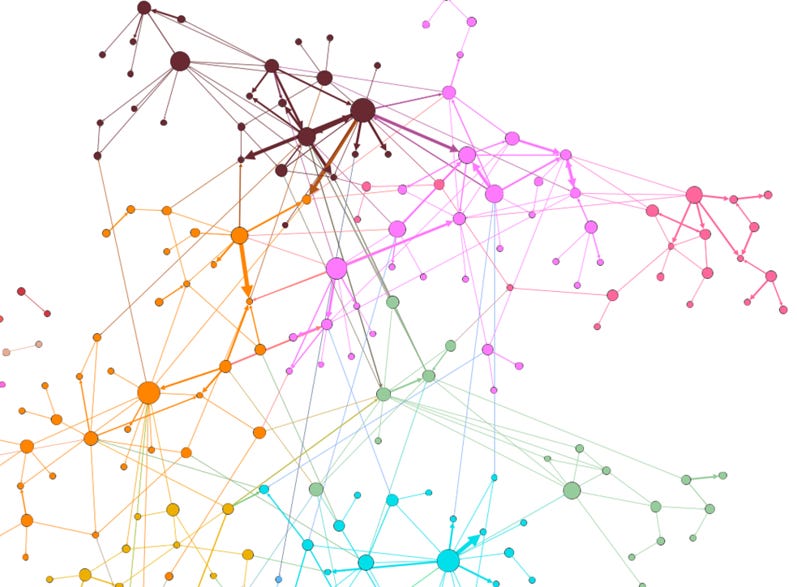Visualizing Sponsored Research Networks
Introduction
At its core, a research network is an interconnected system of researchers, institutions, and their collective works. Picture a stack of post-it notes, each representing a researcher or an institution. The lines drawn between these notes symbolize the collaboration, shared knowledge, or co-authored research papers between these entities. This visual analogy provides an intuitive understanding of the intricate nature of research networks. Their importance lies in the facilitation of collaboration and knowledge sharing, encouraging cross-disciplinary studies, and highlighting potential opportunities for future work.
Visualizing Research Networks
To comprehend the complexity and interconnectedness of research networks, visualization is a key tool. Various methodologies and software tools, ranging from network graphs to advanced computational models, are deployed to create these visual representations. By breaking down the complex structure of research networks into a visual format, we can better analyze, understand, and leverage the connections within these networks.
The Storytelling Power of Research Networks
If a picture is worth a thousand words, then networks are worth even more. Networks let us turn a big set of data (like all the proposals and awards your institution has had in the last five years) into a picture that shows what your research looks like. Just like a story, a network has a start, middle, and end:
Start: Before an event (like ten years ago before a new research building was built)
Middle: The event (like when the new building was finished to improve research)
End: After the event (like today, looking at what has changed)
For example, you might want to understand how research collaborations have changed in the last five years because of hiring new people. What did the networks look like before, and what do they look like now? How have they changed? Did these new people make a big impact on the networks? How can we use this knowledge to improve future collaborations?
Exploring the Uses of Research Networks
Research networks can be used in many different fields. They are a way to share resources, spread new findings, encourage collaborations across different fields, and track the impact of research in different areas. These uses are helpful not only for individual researchers, but also for institutions, by helping with strategic planning, identifying research trends, and promoting a culture of working together.
Example Applications
Research Administration or Grants Specialist
Understanding your research landscape
New employee onboarding
Collaboration trend analysis
Leadership
Exploration of how research collaborations have changed over time
Visualizing the increase in time and complexity due to the rise if interdisciplinary collaborations
Staff turnover, who did they work with, what does the visual representation look like on your network graph.
Executive Leadership
Strategic hire impact on collaboration
Faculty departure analysis on collaboration landscape
Analysis of faculty startup funding
Network Applications
The applications of research networks are as diverse as the disciplines they encompass. They serve as a platform for sharing resources, disseminating new findings, fostering cross-disciplinary collaborations, and even tracking the impact of research across different domains. These applications are not only beneficial to individual researchers but also to institutions, by aiding in strategic planning, identifying research trends, and promoting a culture of collaborative research.
Processing Your Sponsored Research Data
At the simplest level, you just need two pieces of information: the Principal Investigator (PI) Name and Co-Investigator (CoI) Name. You can also include more information, like dates, sponsors, titles, and so on. You can even add other data, like information from Human Resources (ethnicity, gender, race, ranks, etc.), information about research space assigned to researchers, publication data, and other research outputs. This information can all be connected in the network and used for powerful analysis. The PI and CoI are connected by lines and placed according to their collaboration status in the network.
"PI Name" -> "CoI Name"
Conclusion
In conclusion, research networks, with their complex structure and diverse applications, are a cornerstone of modern research. The advent of advanced AI models like ChatGPT is set to further revolutionize our understanding and usage of these networks. As we continue to delve deeper into the realm of research networks, it is anticipated that we will uncover more innovative ways to harness their potential. The future of research networks is indeed an exciting prospect, and we stand on the precipice of new advancements in the field.




